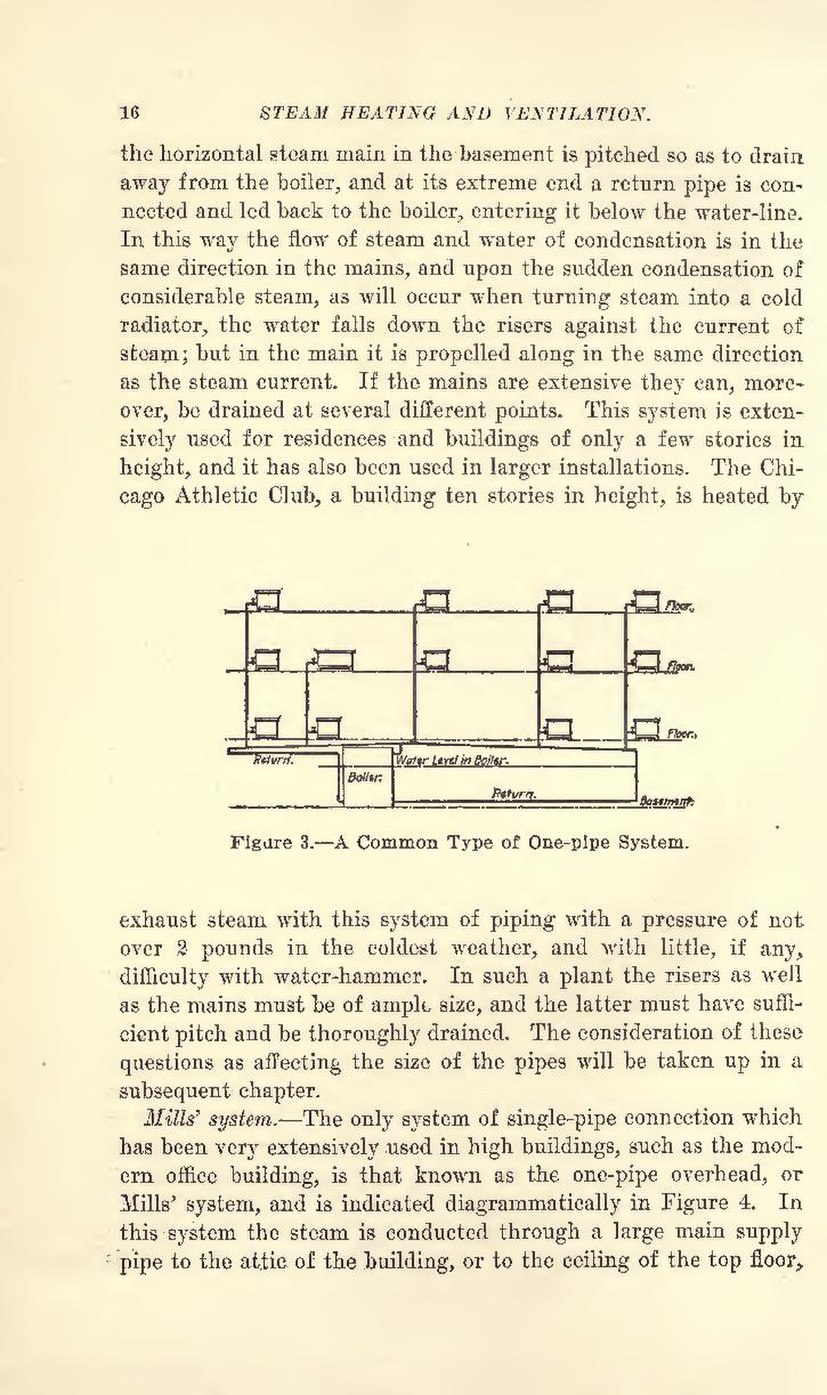the horizontal steam main in the basement is pitched so as to drain away from the boiler, and at its extreme end a return pipe is connected and led back to the boiler, entering it below the water-line. In this way the flow of steam and water of condensation is in the same direction in the mains, and upon the sudden condensation of considerable steam, as will occur when turning steam into a cold radiator, the water falls down the risers against the current of steam; but in the main it is propelled along in the same direction as the steam current. If the mains are extensive they can, moreover, be drained at several different points. This system is extensively used for residences and buildings of only a few stories in height, and it has also been used in larger installations. The Chicago Athletic Club, a building ten stories in height, is heated by exhaust steam with this system of piping with a pressure of not over 2 pounds in the coldest weather, and with little, if any difficulty with water-hammer. In such a plant the risers as well as the mains must be of ample size, and the latter must have sufficient pitch and be thoroughly drained. The consideration of these questions as affecting the size of the pipes will be taken up in a subsequent chapter.
Mills' system.—The only system of single-pipe connection which has been very extensively used in high buildings, such as the modern office building, is that known as the one-pipe overhead, or Mills' system, and is indicated diagrammatically in Figure 4. In this system the steam is conducted through a large main supply pipe to the attic of the building, or to the ceiling of the top floor

